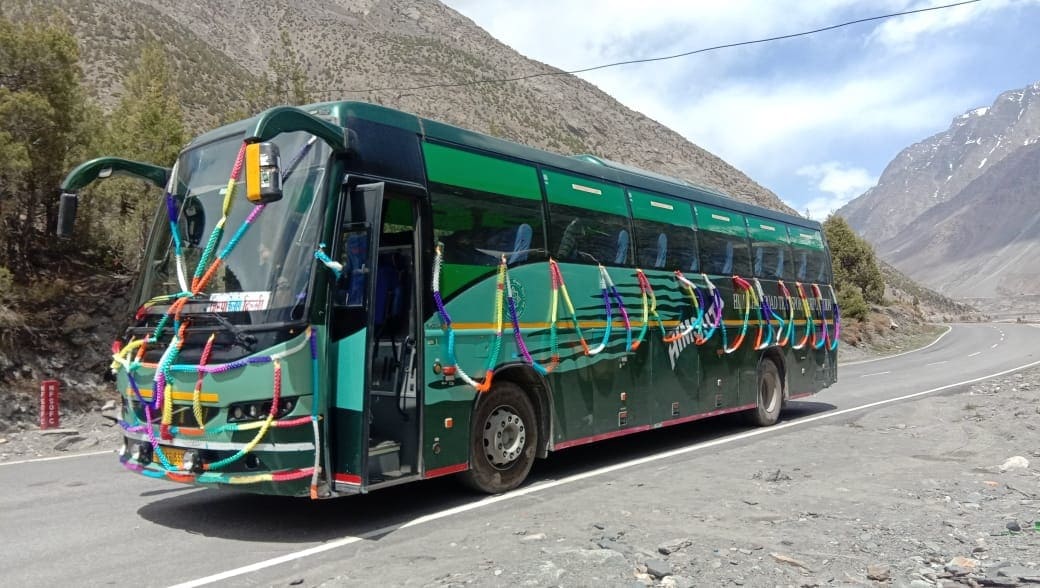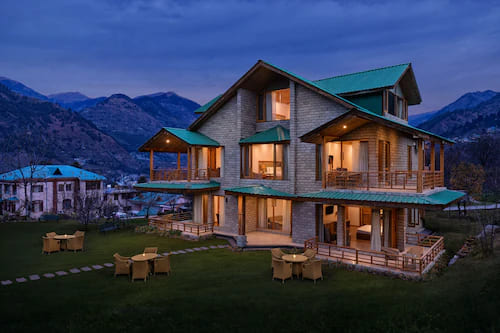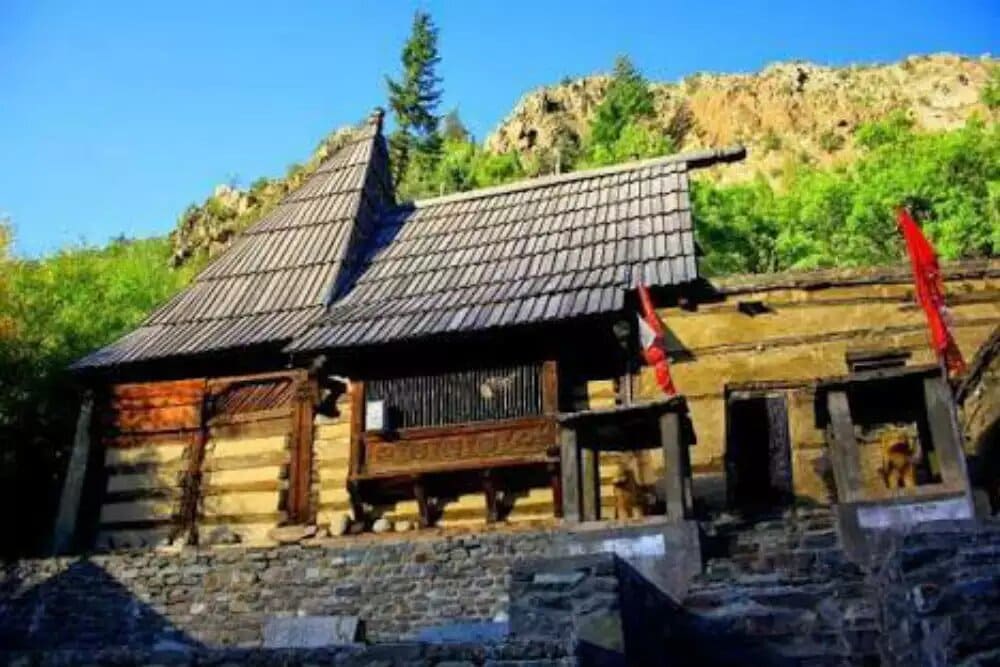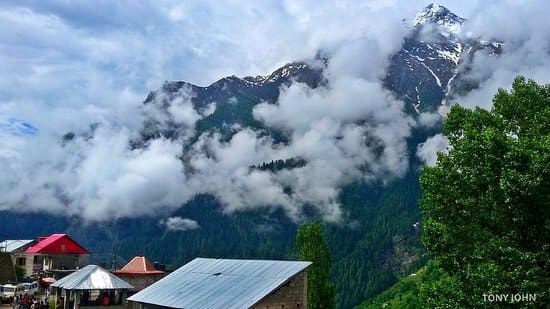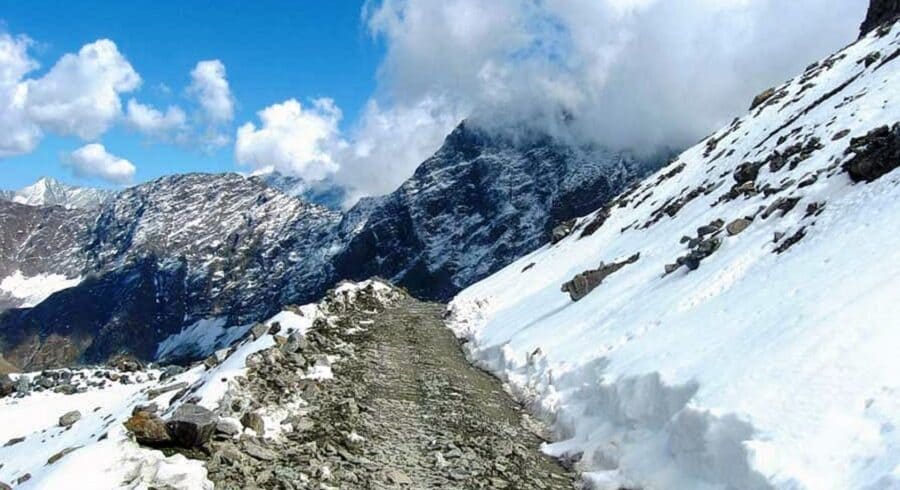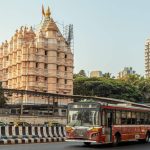Trilokinath Temple: Lord of three worlds
Trilokinath Temple located in the ChandraBhaga Valley in the western Himalayas has special significance for the reason that both Hindus and Buddhists worship the same deity, Trilokinath, a lord Shiva and also known as “Arya Avalokiteshwara,” a popular Bodhisattva. It is considered the third most sacred pilgrimage site after Kailash and Mansarover and that is why Himachal is considered as Devbhoomi. Trilokinath Temple is a place where the brass temple bell and Buddhist prayer wheel chime together.
The Idol of Shri TrilokiNath ji is made of marble and has 6 heads, and is crowned with an image of Amitabh Buddha- the ‘Buddha of Boundless Light. The temple complex has a small granite Lingam and a Nandi bull guarding the Lingam in the centre of a grey-paved courtyard. There’s also a big Buddhist prayer wheel nearby.
The customs of worshipping the god are based on Buddhist traditions and ancient customs and traditions are still practised. This is why the prayers in the temple are still conducted in accordance with Buddhist customs.
The Architecture of Trilokinath Temple is in Kashmiri-Kannauj style. The temple attracts a large number of tourists because of its architecture. The pillars of the premises are said to represent Dharma and Paap and the cravings on the wall, doors and pillars are a work of exemplary craftsmanship.
Discover the one-of-a-kind wonder of ancient times and its unique significance with our Spiti Valley tour packages.
History of Trilokinath Temple
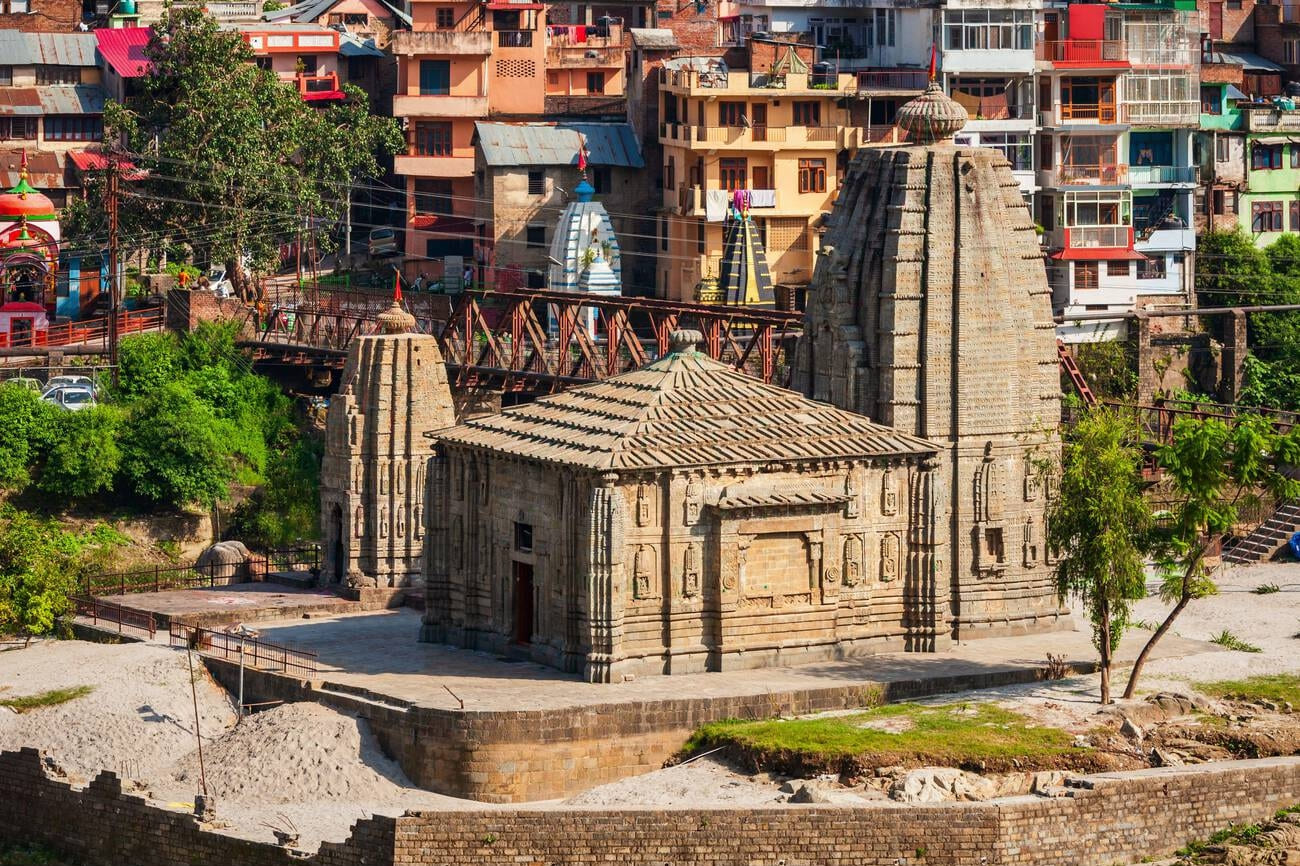
A stone inscription was discovered within the Trilokinath temple at Tunde complex in 2002, according to it, the temple was built in the 10th century by Dvanjra Rana, who is regarded as the forefathers of the Current Rana Thakurs who rule the Trilokinath Village. It is believed that King Shell Varman of Chamba helped in building the temple in “Shikher Style”, as the temples of Chamba are built in the same way and this is the only temple in Lahaul and Spiti which is of Shikher style.
Rajgrana of Chamba Mahayogi Siddha Charparti Dar was completely devoted to Bodhisattva Arya Avalokiteshwar and authored 25 slokas in his honour, known as “Avalokiteshvara strotan Chedem.”
The Idol of Triloki Nath nath ji is made of marble, has 6 heads, and is crowned with an image of Amitabh Buddha- the ‘Buddha of Boundless Light’.
The best time to visit Trilokinath Temple
The best time to visit Trilokinath ji Temple in Lahaul Valley is around August. Every year in the third week of August, the Pauri Festival is organised in the temple. It is a colourful regional festival in which Buddhists and Hindus from Lahaul, Chamba, and Kullu gather in equal numbers to celebrate the festivities. It is a sight to behold to see both Buddhists and Hindus together on temple premises.
The event lasts three days, and on the second day, a large possession is brought through the hamlet as the idol of the deity is taken out for possession. During the celebrations, tourists get an opportunity to witness the cultural blend of Hindus and Buddhists.
How to reach Trilokinath Temple
There are several routes to Triloknath Temple at Tunde and it depends from which district you are coming from.
Triloknath Temple in Spiti Valley is well connected to Keylong via Himachal tourism buses. The buses heading to Udaipur stop at Triloknath Temple. Tourists may reserve a seat on this bus or take a cab from Keylong.
If you are travelling from Lahaul, you would need to travel to Manali. From Manali, take a bus to Keylong and then continue on to the temple via bus or shared cab are also available.
If you are travelling from Chamba, you would need to travel to Killar and then take a bus to the Triloknath temple. Several buses operate between these two districts.
Suggested Read: Spiti Valley in August
Triloknath temple distance from the nearby locations
-
Keylong
Distance: 45 Km
Travel time: 1 hr 12 minutes
-
Manali
Distance: 146 Km
Travel time: 2 hr 26 minutes
-
Kullu
Distance: 142 Km
Travel time: 1 hr 43 Minutes
-
Chamba
Distance: 245 Km
Travel Time: 7 hours 21 minutes
Accommodation near Trilokinath Temple
The Triloknath Temple in Spiti Valley is located in the small village of Triloknath. There are no fancy hotels near Trilokinath temple. Tourists can, however, find 2-3 homestay options at relatively reasonable prices. The homestays are pretty basic. There is also a Dharamshala within the temple premises that provides dormitory accommodations for tourists at a low cost.
Udaipur is the second-largest town in Lahaul Valley. Tourists may expect to find several decent hotels and guest house options in Udaipur. Homestay options are also available in Udaipur. Tourists who prefer to have an insight into the local culture should arrange their accommodation near Trilokinath Temple in homestays since they provide an opportunity to engage with the locals.
Suggested Read: Spiti Weather
5 Places to visit near Trilokinath Temple
1. Mrikula Mata temple
The Mrikula Devi Temple, devoted to the goddess Kali, is of great religious significance to Hindus. There are several tales about the temple. During their exile, the Pandavas are supposed to have built this temple using a single log of wood. This temple is also regarded as Shaktipeeth since it is here that Goddess Durga slew the demon Mahishasura. The temple is 600 years old, and the cravings within it are supposed to be done by God Vishvakarma. The complex art and architecture, as well as the religious sentiments associated with the temple, make it a must-visit destination.
2. Udaipur
Udaipur is the second-largest town in Lahaul Spiti. It is a village located on the banks of the Chandrabhaga River in Himachal Pradesh’s Lahaul and Spiti region. With the majestic snow-capped Himalayas in the background, Udaipur is surrounded by huge pine and deodar forests. Udaipur is a major Hindu pilgrimage place because of the Mrikula Mata temple.
3. Pangi Valley
Pangi Valley is a hidden gem Of Himachal Pradesh and is still the least undiscovered because of the difficulty in reaching here. Pangi Valley with its most difficult terrain is the adventurous dreamy delight. This is the least explored valley, thus it is very pristine and a pleasure to visit to observe nature in its purest form, undisturbed by humanity.
4. Miyar Valley
The S-shaped Miyar Valley is between Zanskar and Chamba. It is almost 75 km long. Miyar Valley is a hikers’ delight. Trekking here is a unique experience.
Miyar Valley is home to medicinal plants and herbs, as well as endangered species such as snow leopards and Himalayan brown bears, as well as an abundance of migrating birds. The Valley is sparsely populated with few tribal inhabitants and it leads to glaciers and passes. Miyar Valley gets the least tourists because of its tough terrain, the visitors are usually dedicated hikers and climbers.
5. Keylong
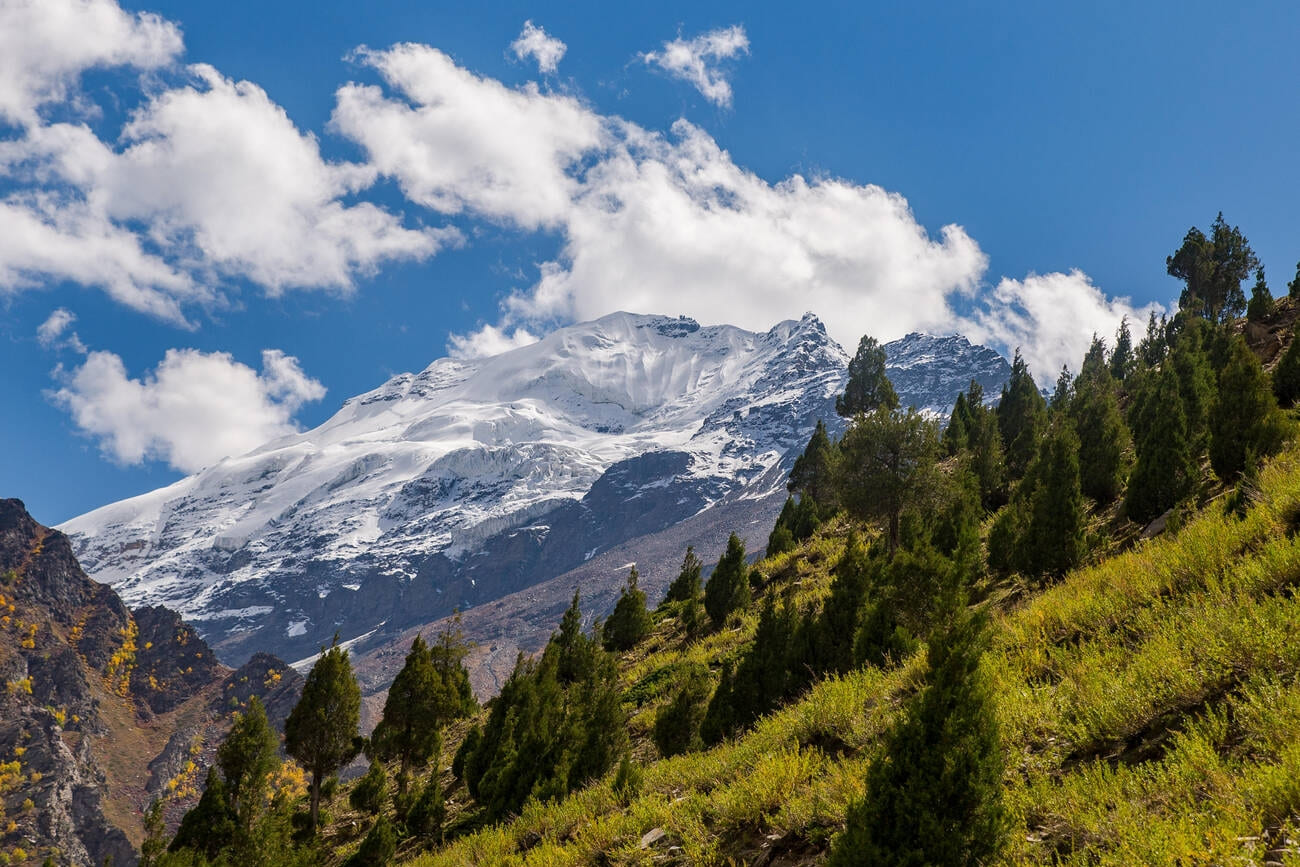
Keylong is the administrative centre of Lahaul and Spiti and the most populated district in Lahaul. This is the only spot in Lahaul and Spiti where you can find a widespread and regular market, making it ideal for shoppers looking to take home souveniers from this location. Keylong has various cafés and restaurants where you may enjoy local food and beverages, and there are also decent hotels in the vicinity. Some of the region’s largest monasteries, Key Monastery are close to Keylong, and the small villages like Hikkim Village that can be covered in the daytime are easily accessible from Keylong.
6. Sach Pass
The Sach Pass is the entrance to Pangi Valley, and it often opens in July. Until then, the land is blanketed with snow. This is the shortest way to Killar, and the road across the pass is exceedingly small. Because of this pass, the distance between Pathankot and Leh has been cut to 670 kilometres, down from 800 kilometres previously.
This Pass is challenging but at the end heavenly. It opens the doors to heaven with a stunning view of the Pristine Himalayas. Before planning the trip here, you need to acclimate yourself physically and for the typical weather conditions.
Suggested Read:Lahaul And Spiti Travel Guide
Are there any specific dress codes or guidelines for visitors to Triloknath Temple?
There are no dress codes to follow within the temple premises. However, it is a religious place and people should be mindful of their behaviour. Any of the comments passed by the visitor should not disrespect the religious sentiments of both the buddhists and Hindu Community. Tourists must try to wear appropriate clothing when visiting the temple and maintain the decorum of the place.
What is the historical significance of Triloknath Temple?
The Significance of Trilokinath Temple is that it is worshipped by both Hindus and Buddhists. Hindus believe that this temple has an idol of Lord Shiva- the god of three worlds. Buddhists affirm that this temple is of Arya Avalokiteshwara, a Bodhisattva. Hence both Hindus and Buddhists worship here in harmony respecting each other’s religious sentiments.
Is there an entrance fee to visit Triloknath Temple?
No, there is no entrance fee to visit the Triloknath temple in Himachal Pradesh.
What is the best time to visit Triloknath Temple?
The best time to visit the Triloknath temple in Himachal Pradesh is in the month of August. Every year in the third week of August Pauri festival is organised in the temple. This festival is joined by both Buddhists and Hindus and they together celebrate the festival with possession and fanfare.



